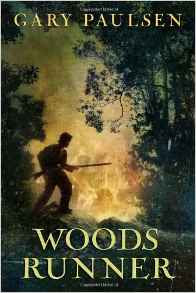This book is the reason I will never read The One and Only Ivan by Katherine Applegate, or any other book about captive animals, for that matter! Of course I was crying by the end of The Tiger Rising by Kate DiCamillo, and I'm weeping now just thinking about all the horrid things humans do to large, majestic animals like whales, elephants, bears and big cats.
So what brought me to this book, you ask? My teaching partner and I gave a copy to each of our students at the end of the school year. I chose it because of its accessible Lexile level (520) and it was a dollar selection from Scholastic. Also, it is written by the beloved author of Because of Winn-Dixie (and other popular books) which my students love. (And which, by the way, also made me cry, especially the movie!)
The Tiger Rising is a short book that I completed in a few hours. I empathized with the emotionally damaged characters and wanted to know how the story resolved itself, even though I knew it would tug at my heartstrings. One can only hope that it stirred some feelings or stimulated some deep thinking in the eleven year olds I sent it home with for summer reading.
Sunday, July 31, 2016
Saturday, July 30, 2016
Woods Runner
I'm glad I finally found the time to read Gary Paulsen's Woods Runner. It is a contemporary companion to The Fighting Ground by Avi for students who are interested in Revolutionary War historical fiction. Last school year, I had a resurgence of interest in Paulsen's book Hatchet by both boys and girls. Hopefully I can entice some fans of the Hatchet series to give Woods Runner a try.
Like The Fighting Ground, Woods Runner centers on a boy coming of age as the American Revolution begins. It explores the themes of commitment to family, freedom, loyalty, and loss of innocence. Another similarity between the two books is the no-holds-barred portrayal of the horrors of war. The time period and events are not romanticized, but rather the realities and hardships are candidly depicted from the perspective of a thoughtful and hard-working boy.
Like The Fighting Ground, Woods Runner centers on a boy coming of age as the American Revolution begins. It explores the themes of commitment to family, freedom, loyalty, and loss of innocence. Another similarity between the two books is the no-holds-barred portrayal of the horrors of war. The time period and events are not romanticized, but rather the realities and hardships are candidly depicted from the perspective of a thoughtful and hard-working boy.
"Thirteen-year-old Samuel lives with his parents on the edge of the wilderness in the British colony of Pennsylvania, a long way from the civilization of any town."The setting itself plays an important role in the story as Samuel fights for survival against enemy soldiers, Native Americans, and nature itself in the threatening woods. There are examples of figurative language such as "a man who moved like smoke, his rifle a part of his arm," as well as historical references to Hessians, the Brown Bess, and British prison ships. Paulsen also incorporates bits of nonfiction into the book; the chapters are separated by short passages that clarify some of the historical details. The purpose of these segments is to highlight the context of the Revolutionary War as well as to provide information about a difficult way of life that contrasts sharply with that of today's readers.
Monday, July 18, 2016
The Almost Moon
I found this book in my door one day last month, a gift from my friend Lisa who is renowned for her attempts to broaden my horizons with reading and movie recommendations. This selection is unlike her usual literary suggestions, but the first line did grab my attention.
“When all is said and done, killing my mother came easily.”
Alice Sebold is the author of The Lovely Bones which I enjoyed for its unusual point of view and raw character development. So, I began reading The Almost Moon in a quest to discover what eccentricities lay with in its twisted plot.
The freak factor was almost too much for me when, after killing her mother, the main character proceeds to engage in something even more taboo. More taboo than matricide, you ask? No spoilers here, but I forged on in order to learn the fate of the poor, damaged souls in this unconventional story. Since I can’t give away the ending, I guess I’ll share some peculiar tidbits I garnered from this book.
First, I learned about the Melungeon people from Tennessee. I had never heard of these interracial groups who inhabited the southeastern United States and seemingly comprised European, African, and Native American ethnicities. At one point in the story, the main character reminisces about trying to convince her young daughters that their family descended from the Melungeons. Quirky.
In another creepy subplot, the main character recalls the history of the town her father came from. It had been closed down and the residents “relocated” in order for a dam to redirect the waters of the Delaware River through it. Despite the engineers best calculations, the flooding had failed, leaving the town a muddy wreck of ruined buildings, which the character visits as a teenager with her long-suffering father. Eerie, but as far as I can tell, not a true story. My Google search for the town of Lambeth, a forty minute drive from Phoenixville, PA, came up short. Double quirk.
My favorite line in the book is when the main character's grown daughter describes the murdered mother's knitting. "Why is it that everything she knits resembles vomit?" The narrator expands on the memory, "The girls were just entering adulthood, and that year, my mother had outdone herself, knitting a full-length sweater coat for each of them. She used a variety of yarns in a striated design, and sure enough, though it was meant to be autumnal in effect, the result seemed more intestinal." Funny.
Reminded me of the mothball-scented, scratchy, wool sweaters my aunt used to give me and my cousins every Christmas. I am a knitter and with so many brilliant colors of yarn to choose from, I often wonder what attracts some people to the unappealing hues.
Clearly, The Almost Moon characters are complicated and flawed, and they wrestle with issues of mental illness. They are self-absorbed, odd, and tormented. I can relate. So I didn't mind spending a short period of time inhabiting their off-kilter world of matricide, suicide and self-indulgence.
Clearly, The Almost Moon characters are complicated and flawed, and they wrestle with issues of mental illness. They are self-absorbed, odd, and tormented. I can relate. So I didn't mind spending a short period of time inhabiting their off-kilter world of matricide, suicide and self-indulgence.
Subscribe to:
Comments (Atom)



